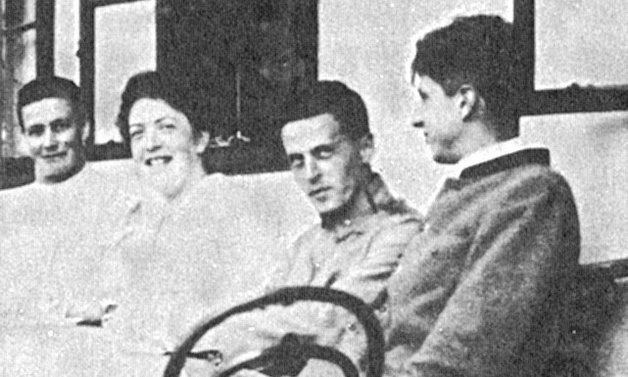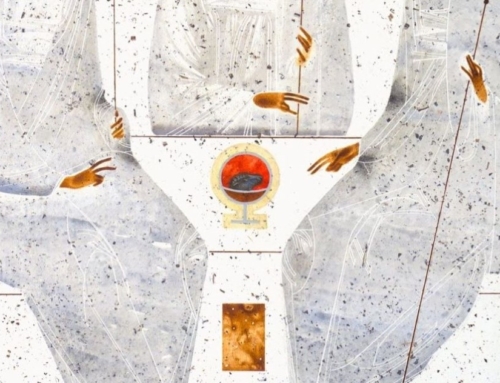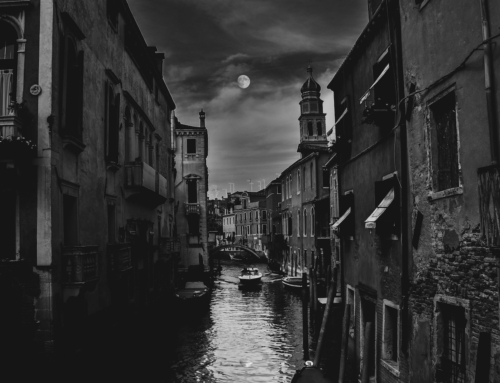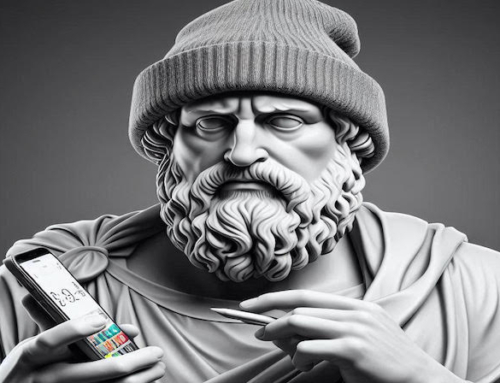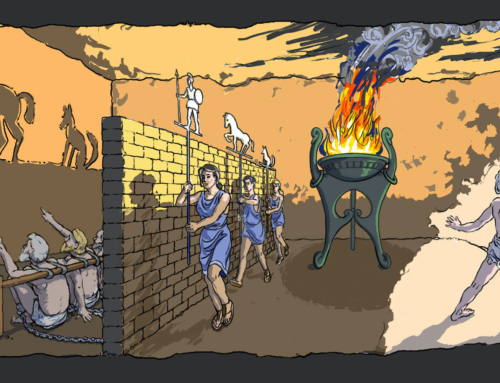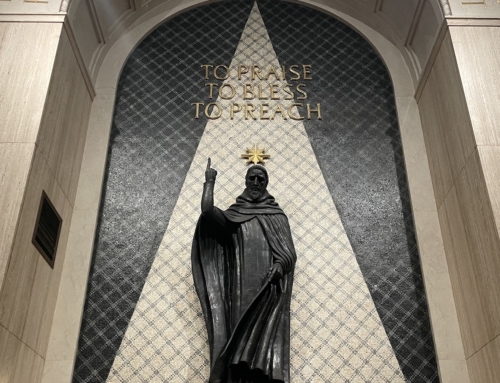It’s a common enough question: “What do you mean by the real presence?” Or, if the inquirer is more theologically astute: “What do you mean by transubstantiation?” Basically: “What is the Eucharist?” And I, in typical Dominican fashion, tend to answer such a question by delving into the intricacies of a Thomistic account (“Christ is present by real concomitance, his whole dimensive quantity of body and all its accidents present by way of substance while the accidents of bread and wine remain…” see ST III, 76, 4).
Now I don’t know about you, but upon reflection this way of answering the question doesn’t always strike me as the best way of explaining what the Church means by the real presence. Most people are not converted by way of theological or metaphysical discourse. But many are converted by being in the presence of the Eucharist at Mass or especially at adoration. They learn about the Eucharist be seeing it. Is this kind of “explanation” of the Eucharist — a showing rather than a saying — less intellectual or sophisticated than the theological definition? If you don’t think there is anything anti-intellectual about it you are in good company: one of the greatest philosophers of the twentieth century would be there by your side.
Ludwig Wittgenstein (1889–1951) should be no stranger to a cultured Catholic. He was the teacher of Catholic philosophers Elizabeth Anscombe and Peter Geach; the philosophical guide for many English Dominicans (Frs. Herbert McCabe, Conrad Pepler, Cornelius Ernst, and Fergus Kerr, among others), and one of the leading inspirations for an entire school of theology called “Analytical Thomism.” Of interest to us is his philosophy of language, most famously laid out in the aphorisms of the Philosophical Investigations. One of his main claims: Meaning is about use.
“For a large class of the employment of the word ‘meaning’ — though not for all — this word can be explained in this way: the meaning of a word is its use in the language… And the meaning of a name is sometimes explained by pointing to its bearer” (PI 43).
Wittgenstein was keen to point out that the meaning of a particular word is often found not in abstract reasoning but in pragmatic deployment. Take one of his favourite examples, the color red. If someone asks you what red is, what would you say? “The color associated with wavelengths of light from approximately 620–740 nm on the electromagnetic spectrum.” Would you say that? Why not? Isn’t it a correct definition of red? Well, in a specific scientific concept it might be, but red means more than that, right? In fact, this technical definition is actually the second given by wikipedia; the first being: “Red is the color of blood, rubies and strawberries.” That’s a much better answer to the question about what red is. It is one dealing with the use of the color, actual examples from lived experience, what Wittgenstein would call Lebensform (“forms of life”). Apparently his influence has not gone unnoticed by wiki-writers…
Returning to our real presence question, we can note that a theological answer is not by any means incorrect (just as the scientific answer to a color question is not incorrect) but it is not the whole answer. And in many cases it may not be the best answer to such a question. If someone asks what you mean by red, show them a ruby; if someone asks you what you mean by the real presence, show them the Eucharist. It is not an intellectual dodge to do so; one is simply explaining the word’s meaning by its use, showing rather than saying. (Incidentally, Wittgenstein’s greatest student, Elizabeth Anscombe, advocates just such an approach for teaching children about transubstantiation.)
I had a “meaningful experience” with the Eucharist along these lines during the novitiate. I was once asked by a priest to get a host for a sick parishioner from the tabernacle in our little chapel where a few of the brothers were praying. As I opened the tabernacle door I heard some commotion. Upon turning I saw the source: the brothers had taken to their knees. This was new and it offered a fuller meaning of the eucharistic presence of Christ and our concomitant reverence for him. The Eucharist means more to me because of that experience, but I would be remiss in trying to tease it out by words or definitions. What happened helped show what it means.
I think Wittgenstein’s linguistic pragmatism rings true in everyday Catholic experience: most people at adoration are simply not running through Aristotle’s categories and checking off which are present in the sacred host. They are worshipping and adoring the body and blood, soul and divinity of Our Lord Jesus Christ. Catholics need not always have a handle on scholastic terminology to understand the meaning of Christ’s eucharistic presence; otherwise the sacrament would be unavailable for the simple, the young, the mentally handicapped, and probably all of us at one time or another when we are lost in wonder before a monstrance. Christ is the Word made Flesh. His dwelling among us continues to be explained not merely by our true theological words, but also in the use we put them to or even the experience of reality beyond them.
✠
Image: On the Hochreit, Summer 1920 (Wittgenstein is the second from the right)

